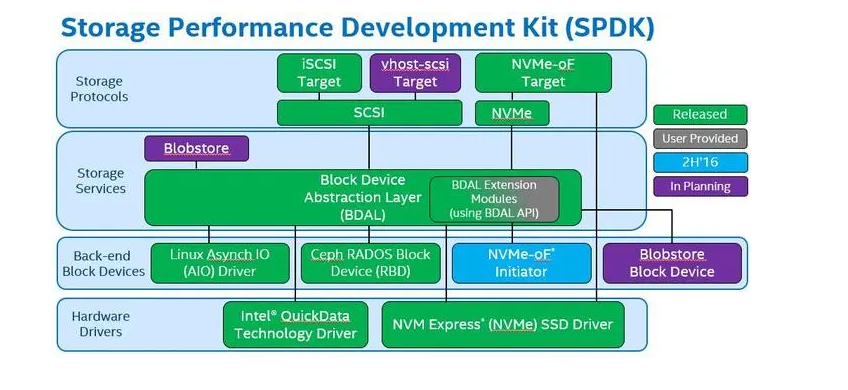以下是一个简单的XDPPROG程序示例,它实现了将从eth0接收到的IPv4数据包转发给eth1,并根据内核中的conntrack状态进行地址转换:
#include <linux/bpf.h>
#include <linux/if_ether.h>
#include <linux/ip.h>
#include <linux/in.h>
#include <linux/tcp.h>
#include <linux/udp.h>
#include <linux/if_packet.h>
#include <linux/if_vlan.h>
#include <linux/filter.h>
SEC("xdp")
int xdp_prog(struct xdp_md *ctx) {
void *data = (void *)(long)ctx->data;
void *data_end = (void *)(long)ctx->data_end;
// Parse Ethernet header
struct ethhdr *eth = data;
if (data + sizeof(*eth) > data_end) {
return XDP_DROP;
}
// Check if it's an IPv4 packet
if (eth->h_proto != htons(ETH_P_IP)) {
return XDP_PASS;
}
// Parse IP header
struct iphdr *ip = data + sizeof(*eth);
if (data + sizeof(*eth) + sizeof(*ip) > data_end) {
return XDP_DROP;
}
// Check if it's a TCP or UDP packet
if (ip->protocol != IPPROTO_TCP && ip->protocol != IPPROTO_UDP) {
return XDP_PASS;
}
// Get source and destination addresses and ports
__be32 src_ip = ip->saddr;
__be32 dst_ip = ip->daddr;
__be16 src_port, dst_port;
if (ip->protocol == IPPROTO_TCP) {
struct tcphdr *tcp = data + sizeof(*eth) + sizeof(*ip);
if (data + sizeof(*eth) + sizeof(*ip) + sizeof(*tcp) > data_end) {
return XDP_DROP;
}
src_port = tcp->source;
dst_port = tcp->dest;
} else { // UDP
struct udphdr *udp = data + sizeof(*eth) + sizeof(*ip);
if (data + sizeof(*eth) + sizeof(*ip) + sizeof(*udp) > data_end) {
return XDP_DROP;
}
src_port = udp->source;
dst_port = udp->dest;
}
// Lookup conntrack state for the packet
struct nf_conntrack_tuple_hash tuple_hash;
struct nf_conntrack_tuple tuple;
memset(&tuple, 0, sizeof(tuple));
tuple.src.u3.ip = src_ip;
tuple.dst.u3.ip = dst_ip;
tuple.src.u.all = (__force __u16)src_port;
tuple.dst.u.all = (__force __u16)dst_port;
tuple.protonum = ip->protocol;
nf_conntrack_init_tuple_hash(&tuple_hash, &tuple, IPPROTO_TCP);
struct nf_conntrack_tuple_hash *hash;
hash = nf_conntrack_find_get(ctx, &nf_ct_zone_dflt, &tuple_hash);
// Check if the packet is a new connection
if (!hash || !hash->tuple.dst.dir) {
// Create new conntrack state and update addresses
struct nf_conn *ct;
ct = nf_conntrack_alloc(ctx, &nf_ct_zone_dflt, &tuple);
if (!ct) {
return XDP_DROP;
}
ct->status |= IPS_SRC_NAT;
ct->tuplehash[IP_CT_DIR_ORIGINAL].tuple.src.u3.ip = src_ip;
ct->tuplehash[IP_CT_DIR_ORIGINAL].tuple.dst.u3.ip = dst_ip;
ct->tuplehash[IP_CT_DIR_ORIGINAL].tuple.src.u.all = src_port;
ct->tuplehash[IP_CT_DIR_ORIGINAL].tuple.dst.u.all = dst_port;
nf_conntrack_hash_insert(hash, ct);
hash = &ct->tuplehash[IP_CT_DIR_REPLY];
}
// Apply NAT address translation
struct nf_conntrack_tuple *reply_tuple;
reply_tuple = &hash->tuple;
__be32 new_src_ip = reply_tuple->src.u3.ip;
__be16 new_src_port = reply_tuple->src.u.all;
ip->saddr = new_src_ip;
if (ip->protocol == IPPROTO_TCP) {
struct tcphdr *tcp = data + sizeof(*eth) + sizeof(*ip);
tcp->source = new_src_port;
} else { // UDP
struct udphdr *udp = data + sizeof(*eth) + sizeof(*ip);
udp->source = new_src_port;
}
// Update Ethernet header and send packet to eth1
eth->h_dest[0] = ...; // Destination MAC address of eth1
eth->h_dest[1] = ...;
eth->h_dest[2] = ...;
eth->h_dest[3] = ...;
eth->h_dest[4] = ...;
eth->h_dest[5] = ...;
return bpf_redirect_map(&tx_port_map, 1 /* index of eth1 */, XDP_PASS);
}
注意,这只是一个示例程序,并且可能需要根据实际情况进行调整和改进。在使用此代码之前,请确保您已经了解以下内容:
- XDP的基本原理和概念,包括如何编写XDPPROG程序、如何使用BPF映射等。
- netfilter中的conntrack机制,它可以记录网络连接状态并进行地址转换。
- 数据包的解析和构造,包括如何解析以太网帧、IP数据包和TCP/UDP头部;以及如何构造新的数据包并更新网络协议头部。





















